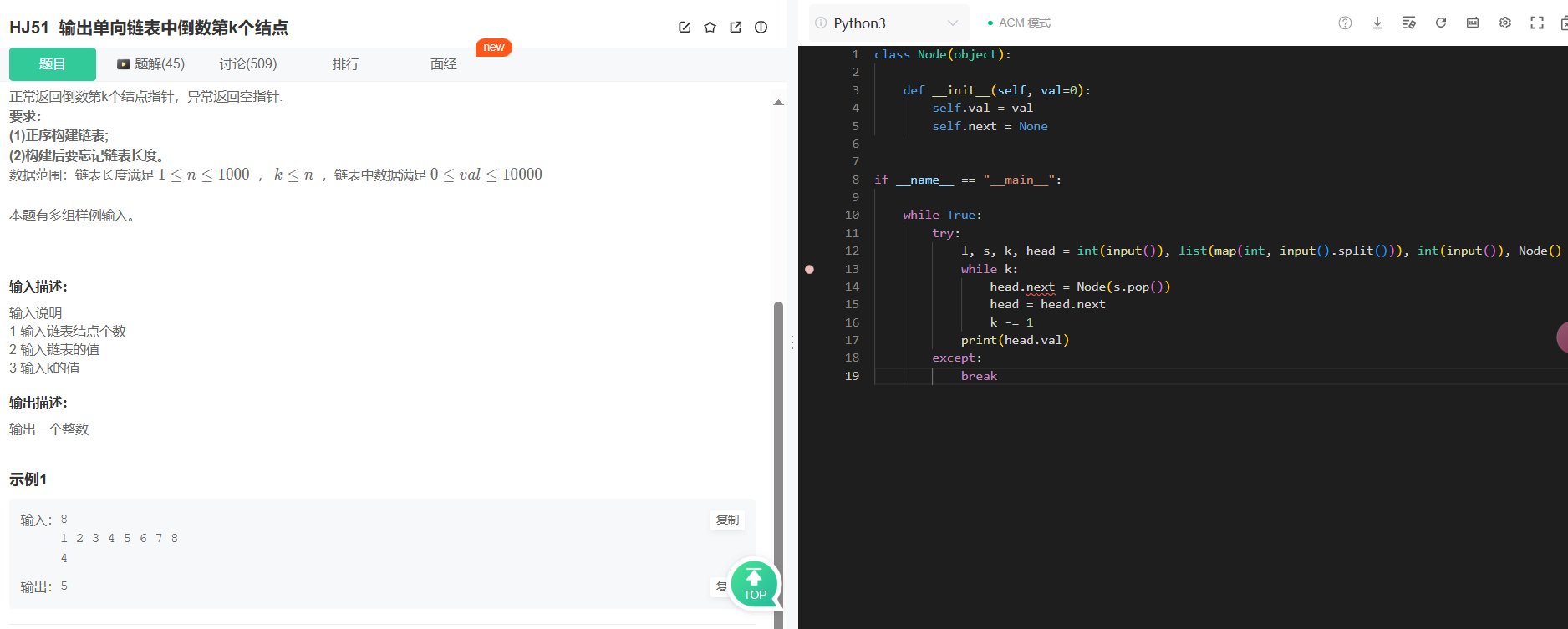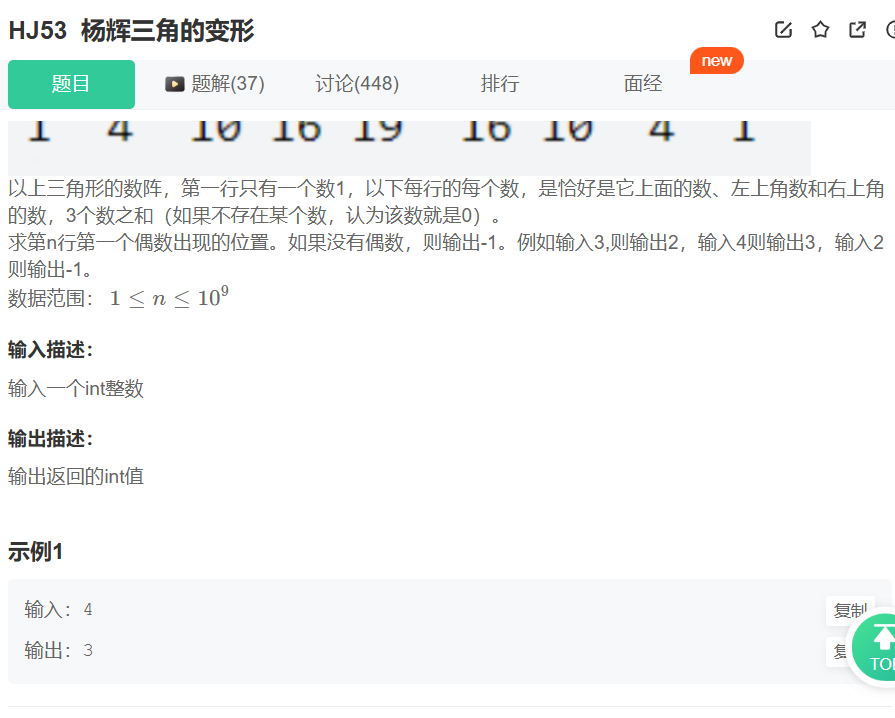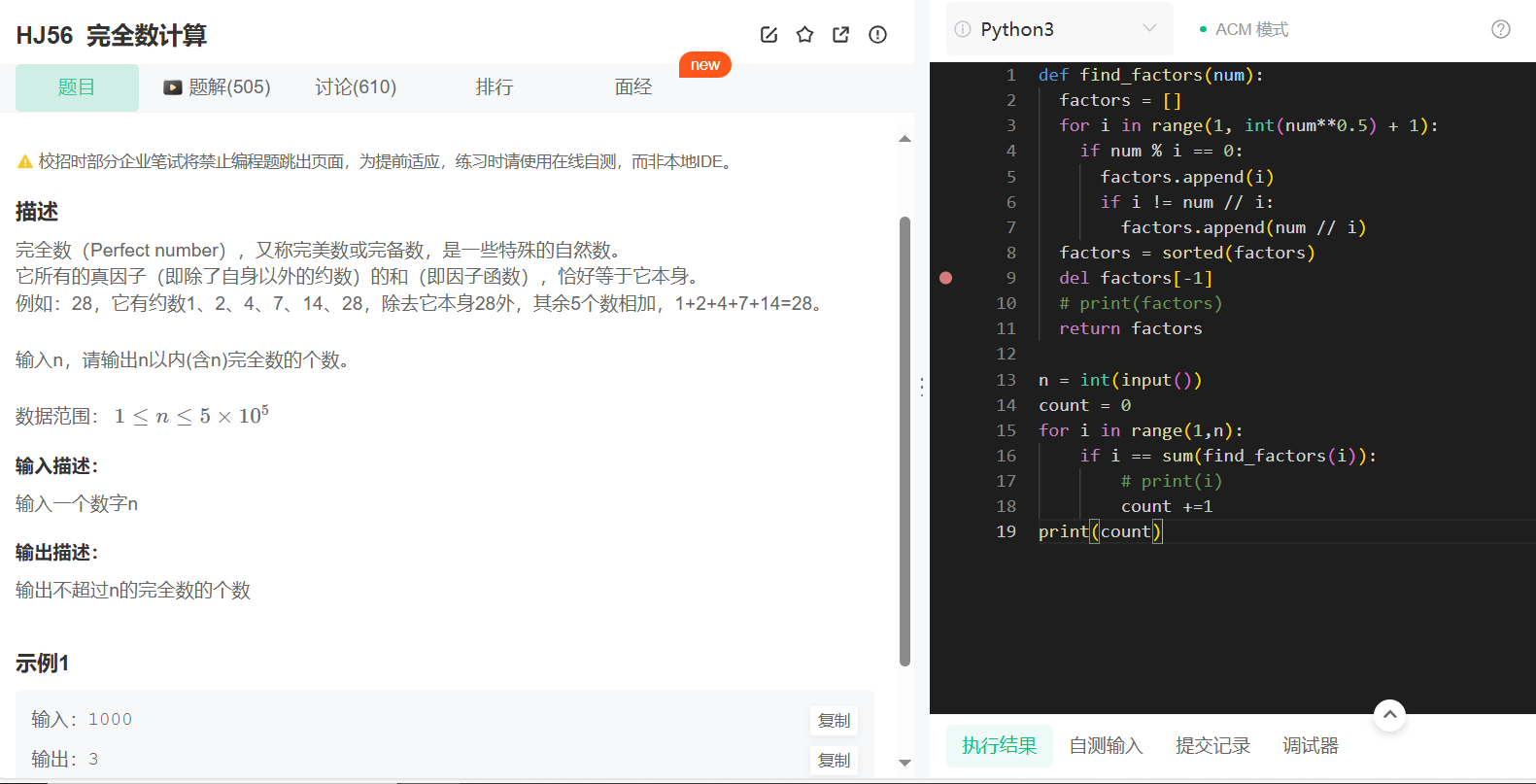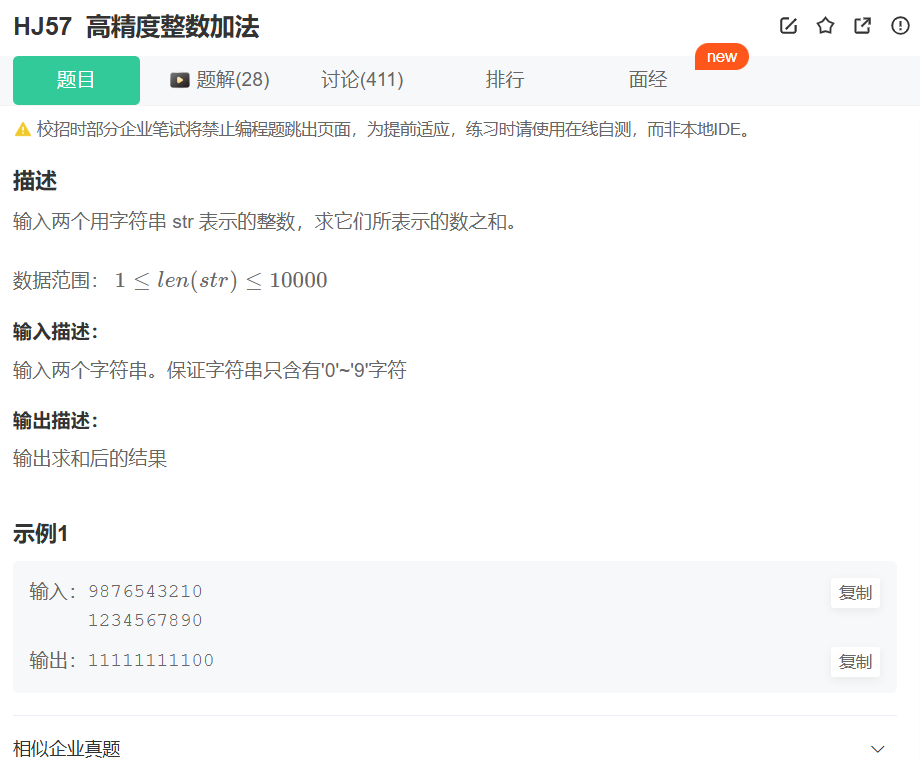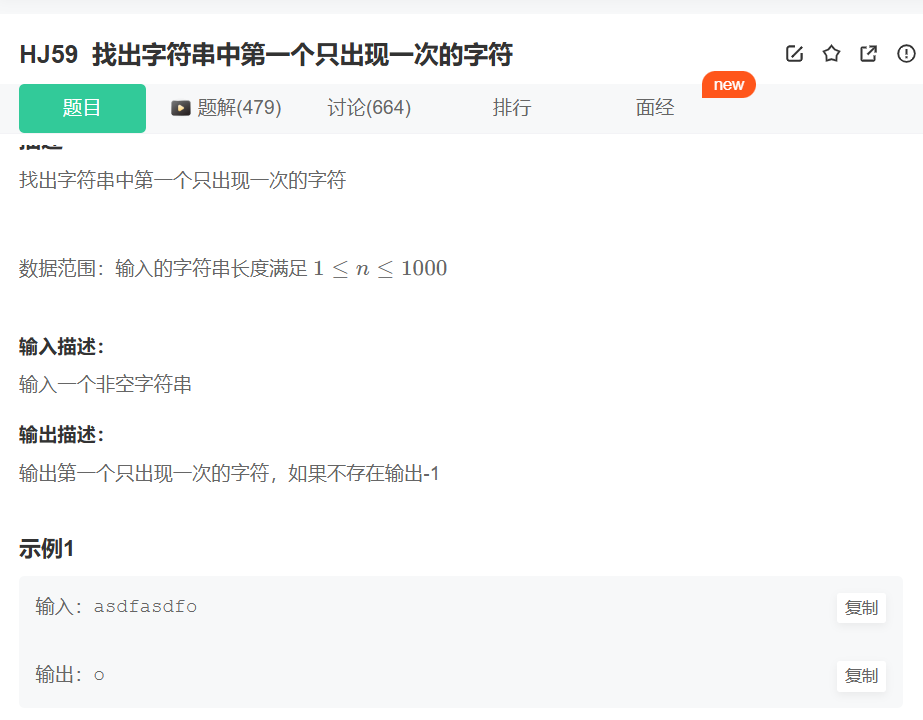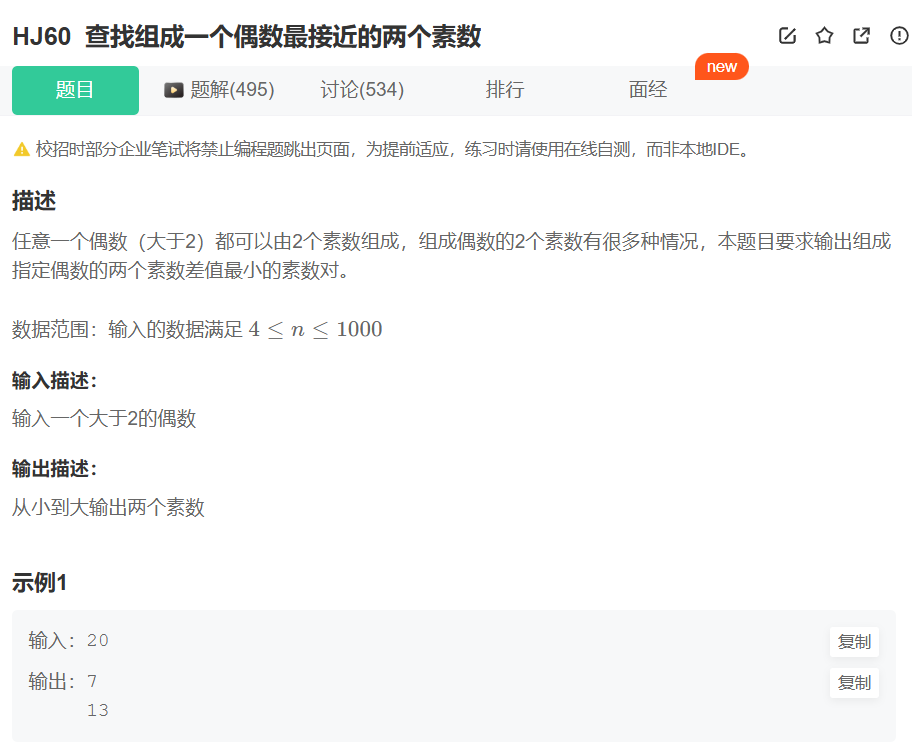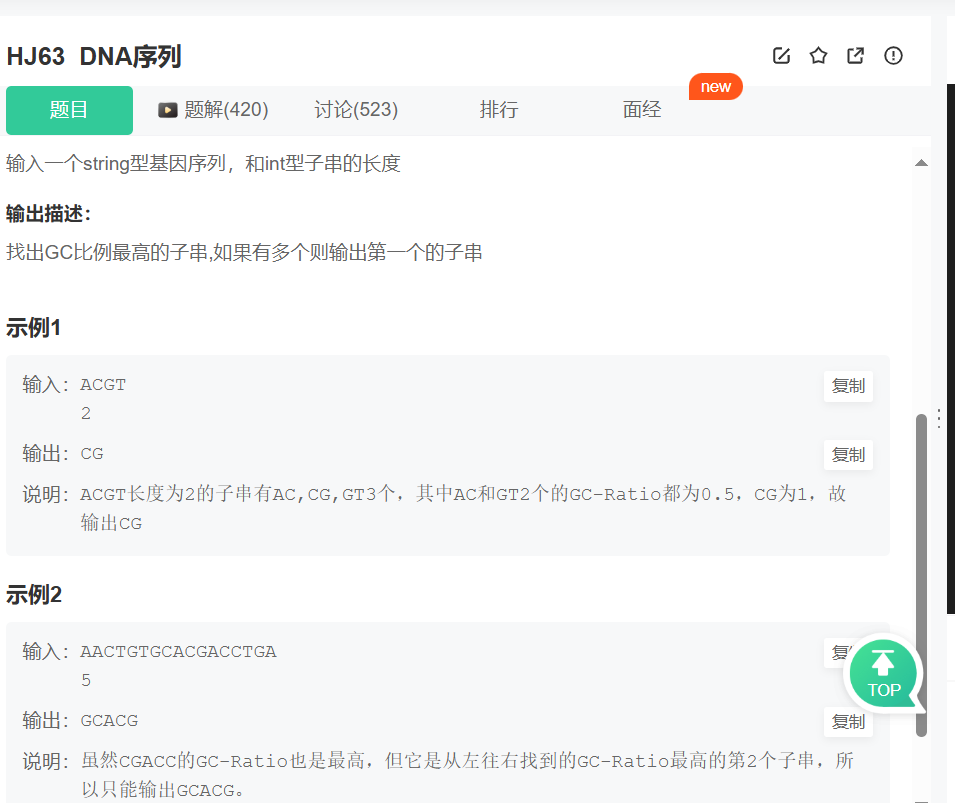HJ51
https://www.nowcoder.com/practice/54404a78aec1435a81150f15f899417d?tpId=37&tags=&title=&difficulty=0&judgeStatus=0&rp=1&sourceUrl=%2Fexam%2Foj%2Fta%3FtpId%3D37
HJ53 杨辉三角
写打印杨辉三角,然后再判断就行了
HJ56
https://www.nowcoder.com/practice/7299c12e6abb437c87ad3e712383ff84?tpId=37&tags=&title=&difficulty=0&judgeStatus=0&rp=1&sourceUrl=%2Fexam%2Foj%2Fta%3FtpId%3D37
HJ57 高精度整数加法
https://www.nowcoder.com/practice/49e772ab08994a96980f9618892e55b6?tpId=37&tags=&title=&difficulty=0&judgeStatus=0&rp=1&sourceUrl=%2Fexam%2Foj%2Fta%3FtpId%3D37
a = input()
b = input()
lenA = len(a)
lenB = len(b)
if lenA >= lenB:
length = lenA
b = b.zfill(length)
if lenB >= lenA:
length = lenB
a = a.zfill(length)
# reverse
a = a[::-1]
b = b[::-1]
tag = 0
res = []
for ch1,ch2 in zip(a,b):
add1 = int(ch1)
add2 = int(ch2)
if add1 + add2 + tag > 9:
res.append(str(add1 + add2 + tag - 10))
tag = 1
else:
res.append(str(add1 + add2 + tag))
tag = 0
if tag == 1:
res.append(str(tag))
res = res[::-1]
print(''.join(res))
HJ58
python越用越舒服,没什么难度
dic1 = {}
str1 = input()
for ch in str1:
if ch not in dic1:
dic1[ch] = 1
else:
dic1[ch] += 1
list1 = []
for key,value in dic1.items():
if value == 1:
list1.append(key)
if len(list1) == 0:
print(-1)
else:
print(list1[0])
HJ60 简单题
一样是先写函数再改
HJ63 DNA序列(简单题)
https://www.nowcoder.com/practice/e8480ed7501640709354db1cc4ffd42a?tpId=37&tags=&title=&difficulty=0&judgeStatus=0&rp=1&sourceUrl=%2Fexam%2Foj%2Fta%3FtpId%3D37
def getGCnum(str1):
length = len(str1)
cnt = 0
for ch in str1:
if ch == 'C' or ch == 'G':
cnt += 1
return cnt
str1 = list(input())
n = int(input())
max_num = 0
for i in range(len(str1) - n + 1):
sub_str = str1[i:i+n]
# print(sub_str)
gcNum = getGCnum(sub_str)
if gcNum > max_num:
res = sub_str
max_num = gcNum
print(''.join(res))
语法知识记录
- 这个语法是用来做多个输入案例的,当没有输入时,try会有异常
while True:
try:
except:
break
Python 没有内置专门的 LinkedList、Queue、Stack 类,但它提供了非常灵活的数据结构和工具,可以轻松地实现这些数据结构。
Python 实现 LinkedList、Queue、Stack 的方式 使用内置的 list:
LinkedList: 可以用 list 来模拟链表,通过索引来访问元素,但插入和删除操作在列表中间会比较慢。 Queue: 用 list
的 append() 方法在队尾添加元素,用 pop(0) 方法在队首删除元素来实现队列。 Stack: 用 list 的 append()
方法入栈,用 pop() 方法出栈来实现栈。 使用 collections.deque:deque 是双端队列,在列表头部和尾部插入或删除元素都非常高效。它比 list 更适合实现队列和栈。
-
一个做题的思路:
快速写函数,然后在函数上面改
print(f"{i} ", end='')
# print(i, end=' ')
